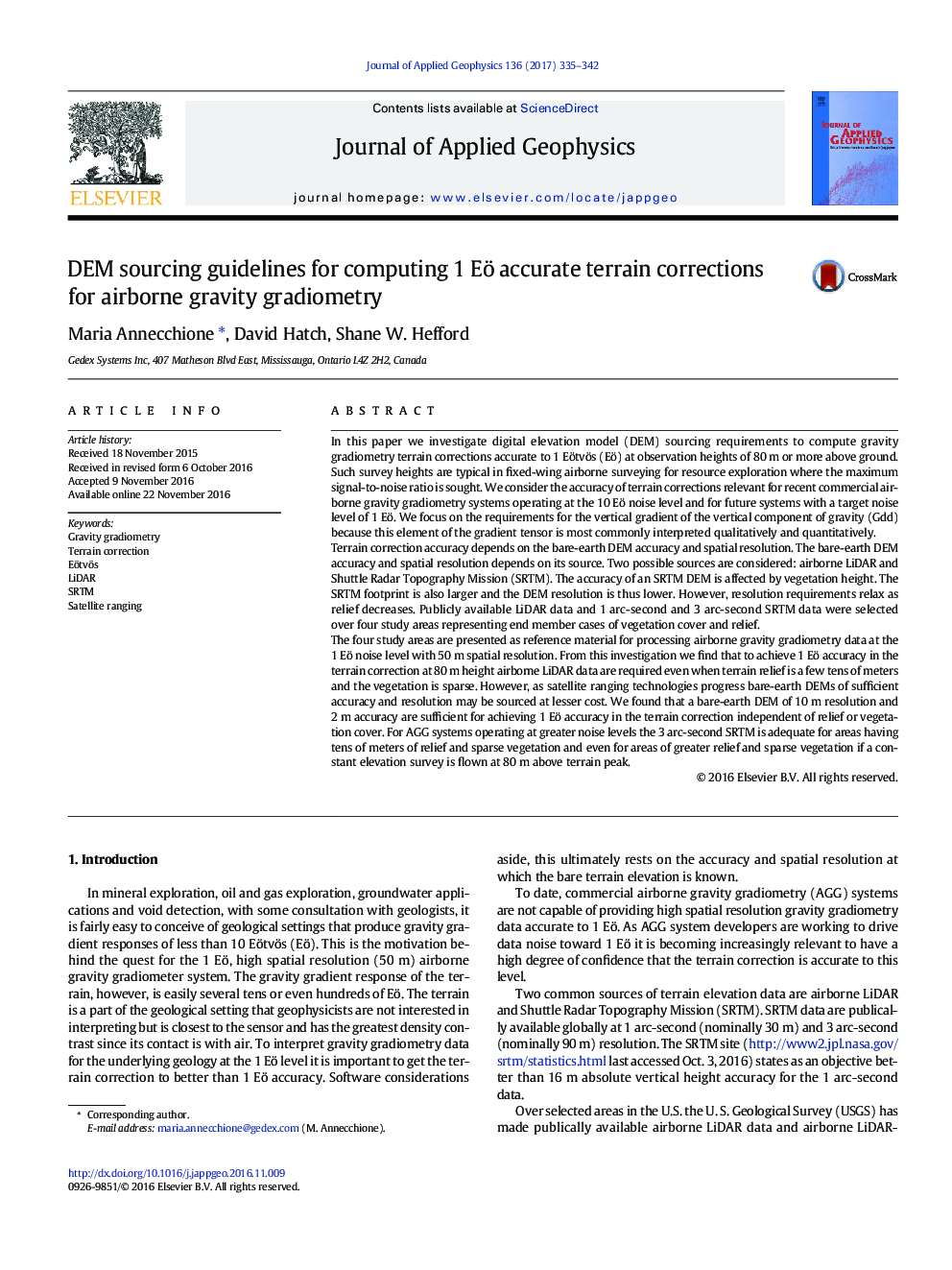| Article ID | Journal | Published Year | Pages | File Type |
|---|---|---|---|---|
| 8915601 | Journal of Applied Geophysics | 2017 | 8 Pages |
Abstract
The four study areas are presented as reference material for processing airborne gravity gradiometry data at the 1Â Eö noise level with 50Â m spatial resolution. From this investigation we find that to achieve 1Â Eö accuracy in the terrain correction at 80Â m height airborne LiDAR data are required even when terrain relief is a few tens of meters and the vegetation is sparse. However, as satellite ranging technologies progress bare-earth DEMs of sufficient accuracy and resolution may be sourced at lesser cost. We found that a bare-earth DEM of 10Â m resolution and 2Â m accuracy are sufficient for achieving 1Â Eö accuracy in the terrain correction independent of relief or vegetation cover. For AGG systems operating at greater noise levels the 3Â arc-second SRTM is adequate for areas having tens of meters of relief and sparse vegetation and even for areas of greater relief and sparse vegetation if a constant elevation survey is flown at 80Â m above terrain peak.
Related Topics
Physical Sciences and Engineering
Earth and Planetary Sciences
Geophysics
Authors
Maria Annecchione, David Hatch, Shane W. Hefford,
